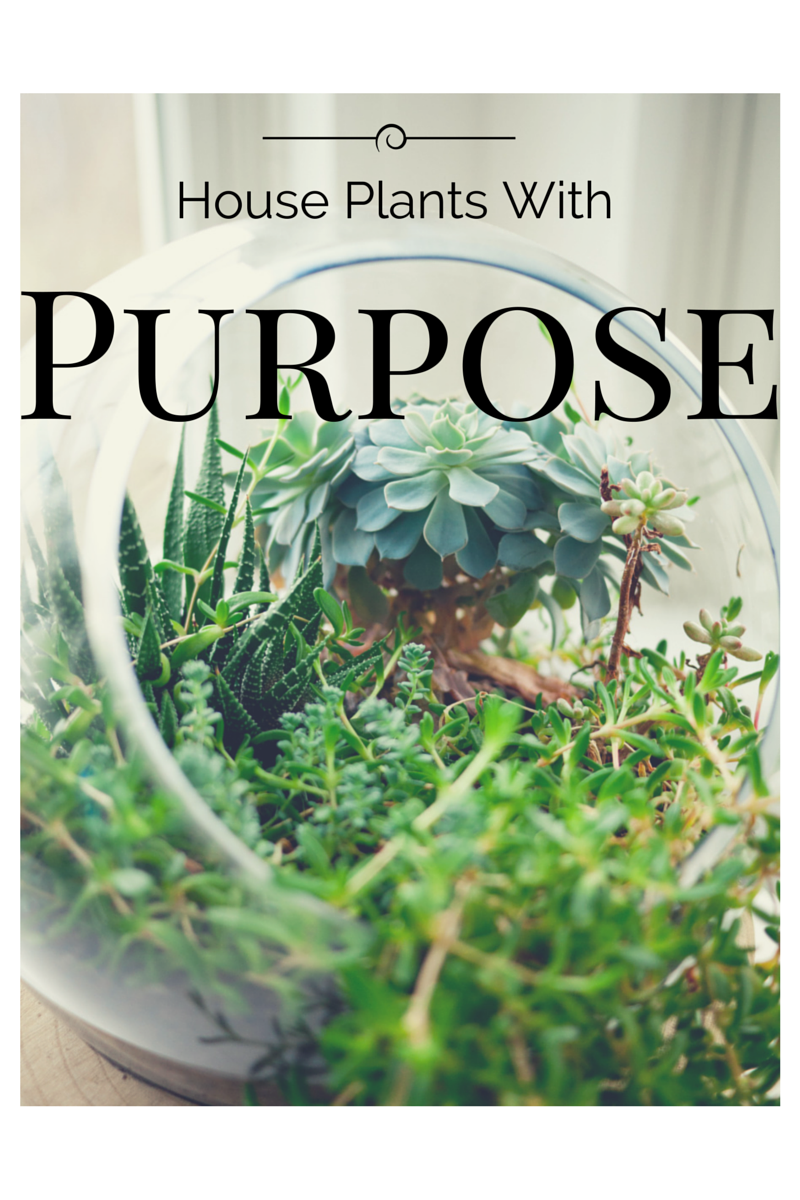I do not have a green thumb. Yet. But I really want to, so that has to count for something, right? I am not in to fake house plants. They collect dust, and really…who wants to clean them??? Why not have something real instead. Something that is serving a purpose other than just sitting there. Perhaps something that cleans the air and improves your quality of living!
I wanted to share what each plant’s purpose is, as well as some care tips that I have gathered with much research!
1. Spider Plants –
While I hate the name, Spider plants absorb toxins including formaldehyde, styrene, carbon monoxide, and benzene.
Care – Spider plants do best with indirect light and well drained soil. You want to dry out the soil between waterings.
2. Aloe –
Not only can Aloe be used for burns and healing of the skin, they also purify the air by absorbing formaldehyde, carbon dioxide and carbon monoxide.
Care – Aloe can be over and under watered. Your best bet is about once a week in winter and in the summer you want to saturate the soil, but let it dry between waterings. You want indirect lighting. Also note that if the leaves get brown spots, that means there are excessive chemicals in the air in your house.
3. English Ivy –
Reduces mold and feces as well as removes formaldehyde.
Care – English Ivy is limber and will grow as high as you allow it. The plant should be kept in bright light, but not sun. It actually thrives in florescent lighting. Keep the soil moist but not soggy. It will be a bit dryer in the spring and fall, in the winter you want to mist it to keep it healthy.
4. Peace Lily –
Reduces chemical toxins, fillers, benzene, trichloroethylene, formaldehyde alcohols, acetone, and VOCS that are in harsh cleaning products. I want to note that the Peace Lily is toxic for pets and kids, so be sure to keep it somewhere safe.
Care – This plant is low maintenance. Indirect light near a window would be best. Just not under the window. Water once per week, do not over water. You will want to mist the leaves several times each week with a spray bottle. Be sure to trim any unhealthy looking leaves.
5. Snake Plant –
This plan removes toxins and is nearly indestructible! The Snake Plant would be best suited in a bedroom, as it maintains a healthy amount of oxygen in the air.
Care – It requires little no lighting. You want to use free draining soil. Do not over water this plant, especially in the winter. Let the soil dry out between waterings.
6. Rubber Plants –
These plants are great for removing formaldehyde. The leaves are toxic for pets, so be sure that the plant is left in a supervised room.
Care – The Rubber Plant requires a balance of light and shade. They thrive in a very moist, but well draining environment. You want to mist this plant regularly, and if you over water it you will know…as the leaves will turn yellow. Keep this plant away from drafty areas of the house.
7. Bamboo –
The Bamboo Plant acts as a natural humidifier, according to NASA. It also removes formaldehyde.
Care – Bright, indirect sunlight would be best. You want to use distilled or bottled water and change it out once per week. Ensure there is always at least one inch of water in the vase at all times.
8. Pothos –
Pothos are great for removing all indoor toxins. You want to set this somewhere high and let it cascade down. It is considered toxic for pets and children if ingested.
Care – This plant is pretty easy. It tolerates neglect and over watering. It does well in bright, indirect light as well as low light. This means it is great for bathrooms or other rooms with low light. It does not do well in direct sunlight. Let the soil dry out between waterings. If it starts to droop, it just needs water. Don’t let the leaves shrivel. Black spots mean the soil is being kept too wet and suddenly paler leaves means that it is getting too much sun.
9. Areca Palm –
The Areca Palm is rated one of the best houseplants for removing indoor toxins. It also acts as a humidifier.
Care – This plant is relatively easy to care for. It loves indirect sunlight by a window.
10. Boston Fern –
The Boston Fern is one of the best plants for removing air pollutants. It also acts as a humidifier.
Care – This plant can be fussy, needing more water and misting than most. You want to keep it in a cool place with high humidity and indirect light. Set pot on a tray of pebbles with water for extra humidity, especially in winter months when the heat is running. Mist the fern 1-2 times per week if needed. You want to make sure soil remains damp, so check it daily. If grown with peat moss, soak once per month to ensure the peat moss is fully hydrated. If the leaves turn yellow, it means there is not enough humidity.
I plan on incorporating these plants throughout my home in the coming weeks. Did you know how many benefits indoor plants had? Do you have indoor plants? If so, what are your tips.

